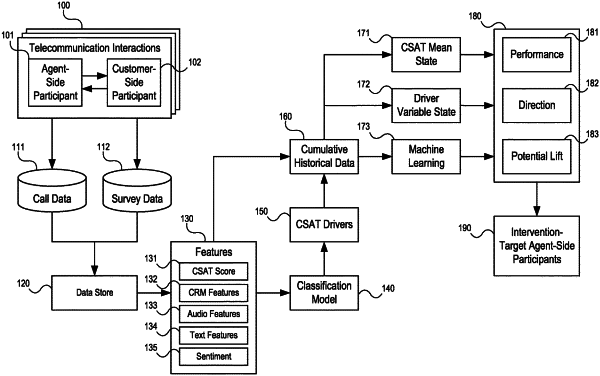| CPC G10L 15/063 (2013.01) [G10L 15/08 (2013.01); G10L 15/32 (2013.01)] | 20 Claims |

|
1. A computer-implemented method for processing speech, the method comprising:
obtaining a trained machine learning model, wherein the machine learning model has been trained using a cumulative historical data structure corresponding to at least one digitally-encoded speech representation for a plurality of telecommunications interactions conducted by a plurality of agent-side participants, wherein the cumulative historical data structure includes a first data corresponding to a score variable and a second data corresponding to a plurality of driver variables;
determining a driver variable state as a function of the cumulative historical data structure;
applying the trained machine learning model to a subset of data in the cumulative historical data structure that corresponds to a first agent-side participant of the plurality of agent-side participants, to generate at least one of a performance classification score or a performance direction classification score;
applying the trained machine learning model to identify an intervention-target agent-side participant from among the plurality of agent-side participants;
applying the trained machine learning model to the cumulative historical data structure to identify an intervention training plan, wherein identifying the intervention training plan comprises identifying one or more intervention variables for the intervention-target agent-side participant based on the driver variable state; and
conducting at least one training session for the intervention-target agent-side participant according to the intervention training plan.
|